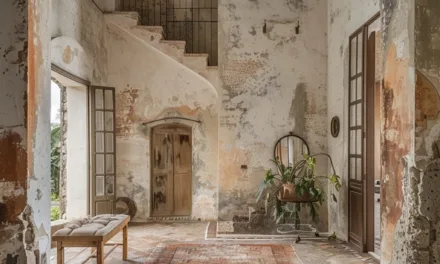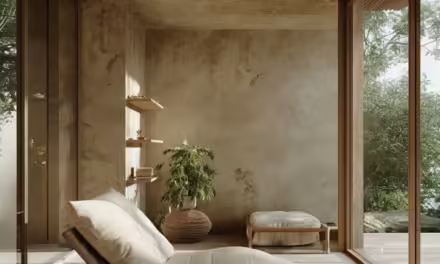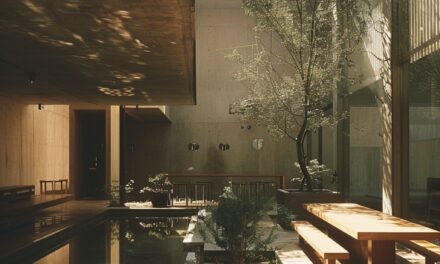The process behind the way we design spaces for clients with the help of AI.
In this example, we got a client brief to use our acoustic sound insulation experience to create a perfect home office and living space incorporate natural sound characteristics into the design to enhance the experience, create soothing environments, and improve overall well-being.
This is a list of case studies we pulled from AI:
The Biomimicry Institute Headquarters, Montana, USA
– **Description:** Designed to integrate with the surrounding landscape, using materials and acoustic principles that mimic natural sounds.
– **Reference:** [Biomimicry Institute Headquarters](https://biomimicry.org/biomimicry-institute-headquarters/)
Nordic Pavilion at Expo 2020 Dubai
– **Description:** Showcases Scandinavian design principles, including the use of natural wood and acoustic treatments that replicate forest sounds.
– **Reference:** [Nordic Pavilion](https://www.expo2020dubai.com/en/pavilions/nordic)
Tippet Rise Art Center, Montana, USA
– **Description:** Integrates musical performances with the natural landscape, utilizing acoustic design to blend music with the environment.
– **Reference:** [Tippet Rise Art Center](https://tippetrise.org/)
Fogo Island Inn, Newfoundland, Canada
– **Description:** Incorporates natural materials and acoustic treatments inspired by the rugged coastal environment to create a serene atmosphere.
– **Reference:** [Fogo Island Inn](https://www.fogoislandinn.ca/)
Masungi Georeserve Visitor Center, Philippines
– **Description:** Uses sustainable materials and acoustic design to harmonize with the natural soundscape of the conservation area.
– **Reference:** [Masungi Georeserve](https://www.masungigeoreserve.com/)
Piano House, Huainan City, China
– **Description:** A building shaped like a grand piano and a violin, designed to produce musical sounds when it rains.
– **Reference:** [Piano House](https://www.archdaily.com/209016/piano-house-huainan-city-hefei-china-hda)
Sensing Nature Pavilion, Singapore
– **Description:** Uses interactive elements and natural sound recordings to immerse visitors in the sights and sounds of Singapore’s biodiversity.
– **Reference:** [Sensing Nature Pavilion](https://www.singaporegp.sg/gallery/sensing-nature)
Sonos Studio, Los Angeles, USA
– **Description:** A studio space designed for music listening experiences, integrating natural acoustic elements to enhance sound quality.
– **Reference:** [Sonos Studio](https://www.sonos.com/en-us/studio)
The Soundproof Cabin, UK
– **Description:** A sustainable cabin designed with acoustic materials that minimize external noise while maximizing natural sounds like wind and rain.
– **Reference:** [Soundproof Cabin](https://www.dezeen.com/2020/06/17/the-soundproof-cabin-co2-pod/)
Bamboo Pavilion, Panyaden International School, Thailand
– **Description:** Uses bamboo construction and natural materials to create a sustainable learning environment with acoustic qualities that blend with nature.
– **Reference:** [Bamboo Pavilion](https://www.archdaily.com/796480/bamboo-pavilion-chiangmai-life-architects)
These case studies demonstrate various approaches to integrating natural sound characteristics into architectural and design elements, enhancing user experience and environmental harmony.
We then created a summary of the key design characteristics for each case study using AI and got this:
The Biomimicry Institute Headquarters, Montana, USA
– Integration with the natural landscape
– Use of materials that mimic natural sounds
Nordic Pavilion at Expo 2020 Dubai
– Scandinavian design principles
– Use of natural wood
– Acoustic treatments replicating forest sounds
Tippet Rise Art Center, Montana, USA
– Integration of musical performances with the natural landscape
– Acoustic design that blends music with the environment
Fogo Island Inn, Newfoundland, Canada
– Use of natural materials
– Acoustic treatments inspired by the coastal environment
Masungi Georeserve Visitor Center, Philippines
– Use of sustainable materials
– Acoustic design harmonizing with the natural soundscape
Piano House, Huainan City, China
– Building shaped like a grand piano and violin
– Produces musical sounds with rain
Sensing Nature Pavilion, Singapore
– Incorporation of interactive elements
– Use of natural sound recordings to immerse visitors in biodiversity
Sonos Studio, Los Angeles, USA
– Designed as a studio space for music listening
– Enhancement of sound quality through natural acoustic elements
The Soundproof Cabin, UK
– Use of acoustic materials to minimize external noise
– Maximization of natural sounds like wind and rain
Bamboo Pavilion, Panyaden International School, Thailand
– Construction with bamboo
– Creation of a sustainable learning environment with natural acoustic qualities
These summaries highlight how each project utilizes different design strategies and materials to integrate natural sound characteristics, enhancing the overall user experience and environmental harmony.
Integrating the diverse concepts from the above projects into a family home or home office space involves creating environments that prioritize natural sound design, sustainability, and user experience. Here’s how these concepts can be integrated into both settings (again using AI to summarise):
Integrated Design Concepts:
1. Architectural and Interior Design:
– Natural Materials and Aesthetic: Incorporate elements inspired by the Fogo Island Inn and Biomimicry Institute Headquarters, using natural materials like wood, stone, and bamboo for both aesthetic appeal and acoustic properties.
– Scandinavian Influence: Apply minimalist design principles from the Nordic Pavilion, focusing on clean lines, natural light, and functional spaces that promote a sense of tranquillity and well-being.
2. Acoustic Considerations:
– Acoustic Treatments: Install acoustic panels and materials (similar to those used in the Soundproof Cabin) to minimize noise from outside and enhance natural sounds such as rainfall or wind.
– Versatile Spaces: Design multifunctional spaces inspired by the Tippet Rise Art Center, where acoustic treatments can be adjusted to accommodate different activities, from work to relaxation to entertainment.
3. Interactive and Educational Elements:
– Smart Technology Integration: Incorporate smart home technologies (similar to Sonos Studio) for audio systems that optimize sound quality while blending seamlessly with natural acoustic environments.
4. Innovative Architectural Features:
– Whimsical and Functional Elements: Integrate unique architectural elements (inspired by the Piano House) that serve dual purposes, such as aesthetic appeal and functional use, like rain-activated musical features or wind chime installations.
– Green Spaces: Design indoor green spaces (like those seen in the Bamboo Pavilion) with bamboo or other sustainable plantings, enhancing air quality and creating a calming atmosphere.
5. Sustainable Practices:
– Energy Efficiency: Implement energy-efficient lighting, heating, and cooling systems, along with passive design principles to reduce environmental impact (aligned with practices from the Bamboo Pavilion).
– Water Conservation: Incorporate water-saving fixtures and rainwater harvesting systems (inspired by eco-friendly initiatives at the Fogo Island Inn), promoting sustainable living practices.
From the above, this final design was created:
Home office:
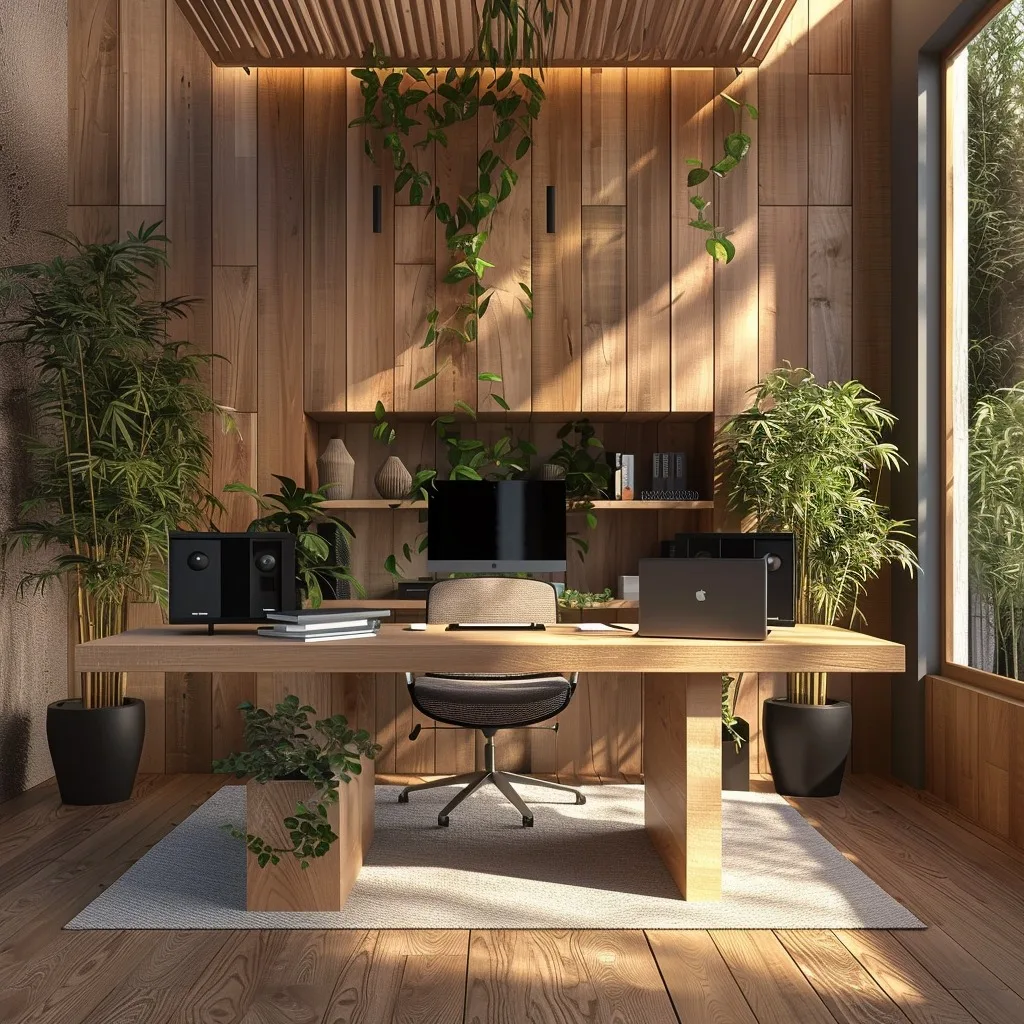
Living space:
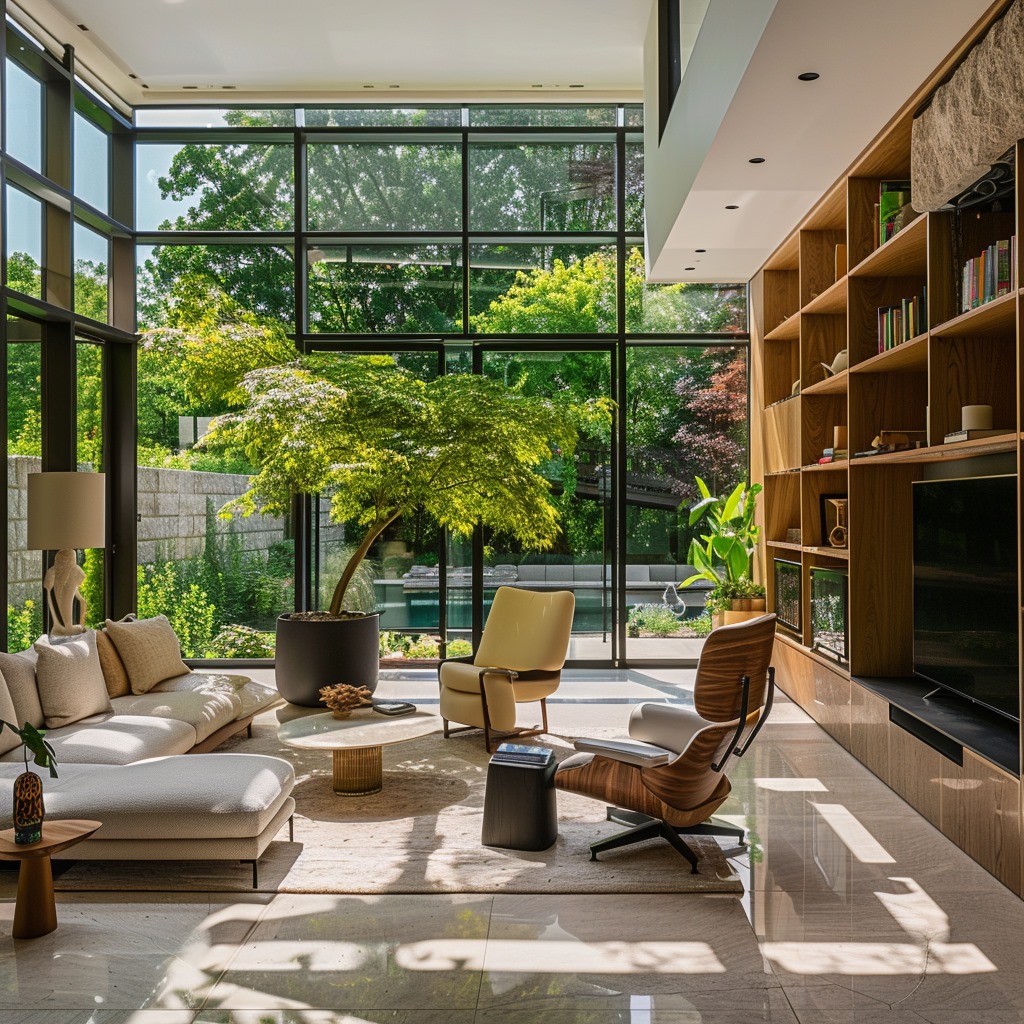
The design processes outlined above are not overly complex as you can see. The key is to clearly understand your goals and objectives. Look to relevant case studies for inspiration, identifying the elements you find most appealing. Then, take the core principles and approaches from those case studies to help guide you through your own design process. By following this straightforward approach, you can create an effective and visually engaging design, even if you don’t have extensive design experience. The most important thing is to remain focused on your intended outcomes and use relevant examples as a roadmap for your project which will help your designer or architect put together the final designs. Never use AI to design structural elements! Always make sure anything produced in AI is validated by a professional before building!
We are currently collaborating with or actively testing more than 20 brands that align with our rigorous standards.







